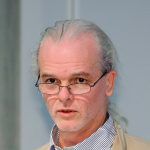2011–2012 world nuclear industry status report
By Mycle Schneider, Antony Froggatt | September 1, 2012
The market niche that nuclear power once held is disappearing. The key nuclear indicators—including the number of operating reactors, installed capacity, power generation, and share of total electricity generation—all show that the global nuclear industry is in decline. In 2012, nuclear power’s competitors—most notably, wind and solar generation—are rapidly gaining market share as long lead times, construction delays, cost overruns, and safety concerns have combined to make nuclear power a risky investment that the markets are increasingly unwilling to make. To renew the aging world nuclear fleet, nuclear utilities would need to surmount a number of major problems, including a short-term manufacturing bottleneck, a shortage of skilled workers, regulatory uncertainty, a skeptical financial sector, and negative public opinion. The aftermath of the Fukushima disaster and the world economic crisis have only exacerbated these problems. The authors write that a realistic scenario that leads to an increase in nuclear’s share of the world’s electricity is hard to imagine.
Together, we make the world safer.
The Bulletin elevates expert voices above the noise. But as an independent nonprofit organization, our operations depend on the support of readers like you. Help us continue to deliver quality journalism that holds leaders accountable. Your support of our work at any level is important. In return, we promise our coverage will be understandable, influential, vigilant, solution-oriented, and fair-minded. Together we can make a difference.
Issue: Bulletin of the Atomic Scientists Volume 68 Issue 5
Keywords: Areva, Fukushima, global, nuclear plants, nuclear power, photovoltaic, renewables, status, wind energy
Topics: Uncategorized
















